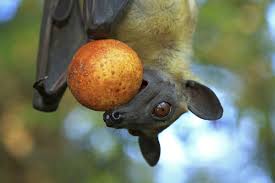Nipah Virus: Understanding a Deadly Zoonotic Threat






Nipah virus (NiV) is a highly infectious zoonotic virus that poses significant public health risks. It can cause severe respiratory and neurological disease in humans, often leading to fatal outcomes.
Origin and Transmission
Zoonotic Virus
Nipah virus (NiV) is a zoonotic virus, meaning it is transmitted from animals to humans. The primary natural hosts are fruit bats of the Pteropus genus, commonly known as flying foxes.
Primary Reservoir: Bats
Fruit bats, particularly Pteropus species, are the primary animal reservoir for the Nipah virus. These bats harbor the virus without showing symptoms and can shed the virus in their saliva, urine, and feces.
Intermediate Hosts
Pigs have been identified as an important intermediate host, particularly during the initial outbreak. The virus can spread from bats to pigs and then to humans through close contact with infected pigs.
Human-to-Human Transmission
Direct human-to-human transmission can occur, particularly through contact with the bodily fluids of infected individuals. This mode of transmission has been observed in hospital settings and among caregivers.
Contaminated Food
The virus can also be transmitted through the consumption of food products contaminated with bat saliva or urine. For instance, raw date palm sap has been identified as a source of infection in some outbreaks.
Symptoms and Complications
Incubation Period
The incubation period for Nipah virus infection ranges from 4 to 14 days but can extend up to 45 days.
Initial Symptoms
- Fever
- Headache
- Muscle pain (myalgia)
- Vomiting
- Sore throat
Severe Symptoms
As the disease progresses, severe symptoms can develop, including:
- Encephalitis (inflammation of the brain)
- Drowsiness
- Disorientation
- Mental confusion
- Seizures
- Coma
High Mortality Rate
The mortality rate for Nipah virus infection is high, ranging from 40% to 75%, depending on the outbreak and available healthcare.
Diagnosis and Treatment
Diagnostic Methods
- RT-PCR (Reverse Transcription Polymerase Chain Reaction): Detects viral RNA in bodily fluids.
- ELISA (Enzyme-Linked Immunosorbent Assay): Detects antibodies against Nipah virus.
- Virus Isolation: Culturing the virus from clinical samples in specialized laboratories.
No Specific Antiviral Treatment
Currently, there is no specific antiviral treatment for Nipah virus infection. Treatment is primarily supportive and includes intensive care for severe respiratory and neurological complications.
Supportive Care
- Managing respiratory and neurological symptoms
- Maintaining hydration and electrolyte balance
- Providing mechanical ventilation if needed
- Treating secondary bacterial infections
Prevention and Control
Avoiding Contact with Bats and Sick Animals
- Limit exposure to areas where bats are known to roost.
- Avoid contact with sick pigs and other animals.
Food Safety
- Properly wash and peel fruits before consumption.
- Avoid consuming raw date palm sap and other products potentially contaminated with bat excreta.
Protective Equipment
- Use protective equipment (e.g., gloves, masks) when handling infected animals or caring for infected individuals.
- Implement strict infection control practices in healthcare settings.
Public Health Surveillance
- Monitor and report cases promptly.
- Implement quarantine and isolation measures to control the spread.
- Educate the public and healthcare workers about transmission risks and prevention strategies.
Notable Outbreaks
First Identified: 1998-1999 Malaysia and Singapore Outbreak
- The virus was first identified during an outbreak in Malaysia and Singapore, primarily affecting pig farmers and those in close contact with pigs.
- Over 100 human deaths were reported, and millions of pigs were culled to control the outbreak.
Subsequent Outbreaks
- Bangladesh: Regular outbreaks have occurred since 2001, often linked to the consumption of raw date palm sap.
- India: Notable outbreaks have occurred in the Indian state of Kerala, with significant human-to-human transmission.
Research and Future Directions
Vaccine Development
Research is ongoing to develop vaccines against the Nipah virus. Several vaccine candidates are in preclinical and clinical stages of development.
Antiviral Research
Scientists are exploring potential antiviral treatments that could be effective against Nipah virus, including monoclonal antibodies and antiviral drugs.
Global Health Initiatives
International organizations, including the World Health Organization (WHO) and the Centers for Disease Control and Prevention (CDC), are working to improve surveillance, preparedness, and response to Nipah virus outbreaks.
Conclusion
Nipah virus is a highly pathogenic virus with the potential to cause severe and fatal infections in humans. Understanding its transmission dynamics, symptoms, and preventive measures is crucial for controlling outbreaks and protecting public health. Ongoing research and global cooperation are essential to develop effective treatments and vaccines to combat this deadly virus.
Recent Posts
AFFIN Launches “AFFIN 50 Years, 50 Prizes” Golden Jubilee Campaign, Celebrating 50 Years Of ‘Always About You’ With RM1 Million Grand Prize
KUALA LUMPUR, MALAYSIA - Media OutReach Newswire - 22 April 2025 - AFFIN Group ("AFFIN"…
Appier Powers POP MART Taiwan to Transform Limited-Edition Product Sales and OMO Experience for Enhanced Operational Efficiency
HONG KONG SAR - Media OutReach Newswire - 22 April 2025 - Appier announced today…
WRISE Group launches WRISE Capital to bolster Corporate Advisory Services
New business unit leverages the Group’s acquisition of Elstone Capital enabling the Group to deliver…
Chubb Appoints Janene Blizzard as Head of Accident & Health for Asia Pacific
Senior leader with 30 years of insurance experience, 16 years with Chubb SINGAPORE - Media…
Zoho Workplace Study Highlights: APAC Leads in Digital Transformation and Security Maturity
SINGAPORE - Media OutReach Newswire - 22 April 2025 - Zoho, the global technology company…
VinFast delivered 400 VF 3 to Indonesian dealers and customers within two months of launch
JAKARTA, INDONESIA - Media OutReach Newswire - 21 April 2025 - VinFast announces the milestone…